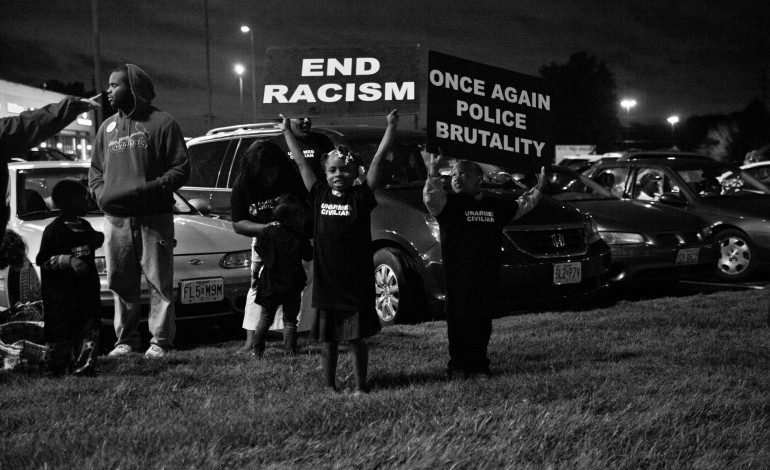

Whose Streets? is the new documentary from first-time directors Saabah Folayan and Damon Davis. It revolves around the shooting and death of eighteen-year-old black teenager Mike Brown at the hands of a white policeman and how that served as the beginning for the Black Lives Matter movement. At first, I was hesitant to review this movie because I’m not too familiar with this subject and know that it’s incredibly sensitive for many individuals; while I’ll try my best to remain as unbiased as possible, I’ll also have to express my more personal beliefs at several times throughout this review. With all that out of the way, Whose Streets? is good, but still far from perfect.
One element where this film shines brightest is in its technicality. Using footage taken on a handheld camera and cellphone cameras, this intimate style of filmmaking makes the viewers feel as if they are witnessing these tragic events in real-time. The credits show Folayan as the main director while only showing Davis as the co-director and regardless of who did more heavy lifting on that front, they should still feel proud of their debut even if everyone may not agree with the arguments that they present in the film. Whose Streets? also shows archival footage depicting how the media only focused on the more violent reactions to distract from the murder of an unarmed black teenager and how the state of Missouri handled this situation with a complete lack of competence; this creative use of visual imagery holds my attention throughout most of the film’s short ninety-minute runtime. Christopher McNabb, the editor of Whose Streets?, is also worth mentioning because he assembles these scenes together in a way that keeps the main narrative from meandering too much. In terms of music, the film’s soundtrack is a blend of contemporary hip hop and R&B mixed with jazzier musical arrangements from composer Samora Abayomi Pinderhughes; it isn’t incredibly memorable, but still fits in context.
Whose Streets? depicts several different perspectives and the filmmakers integrate in surprisingly amazing ways. They range from average bystanders who took out their cameras during protests, to the citizens of Ferguson, Missouri who weren’t too far away from where Mike Brown died. The interviewees, which mostly consist of the latter are all deeply affected on a personal level and the movement that developed as a result brought them closer together as people and a community; the filmmakers also wisely decide to show many of the interviewees’ personal lives and visually demonstrate how they have as many rights as any other American, making them feel as if they are characters worth investing in.
While some moviegoers will find certain themes and messages in Whose Streets? inspiring, others won’t feel the exact same way. In fact, the film often appears as a Black Lives Matter propaganda piece since it’s so one-sided in several smaller topics such as the role that police play in society. To clarify, not all police are law-abiding citizens but the film usually paints them as villains. Another documentary called Step dealt with a similar topic but handled it with more respect. In that film, one person on-screen is a correctional officer who grew up loving her local police department. Therefore, why can’t Whose Streets? only criticize the kind of police who would shoot innocent black teenagers such as Mike Brown as opposed to criticizing police in general? The film also drags towards the end since it has nothing more to say and decides to overemphasize its “protesting makes progress” message.
Verdict: 3 out of 5
Whose Streets? isn’t a bad movie but one that I will likely never watch again. It’s a powerful and incredibly well-made film that doesn’t resonate with me enough on a thematic level. Hopefully, Kathryn Bigelow’s Detroit is not only a better mad movie, but is also one that feels nuanced in its thematic presentation despite how some people are claiming otherwise.


